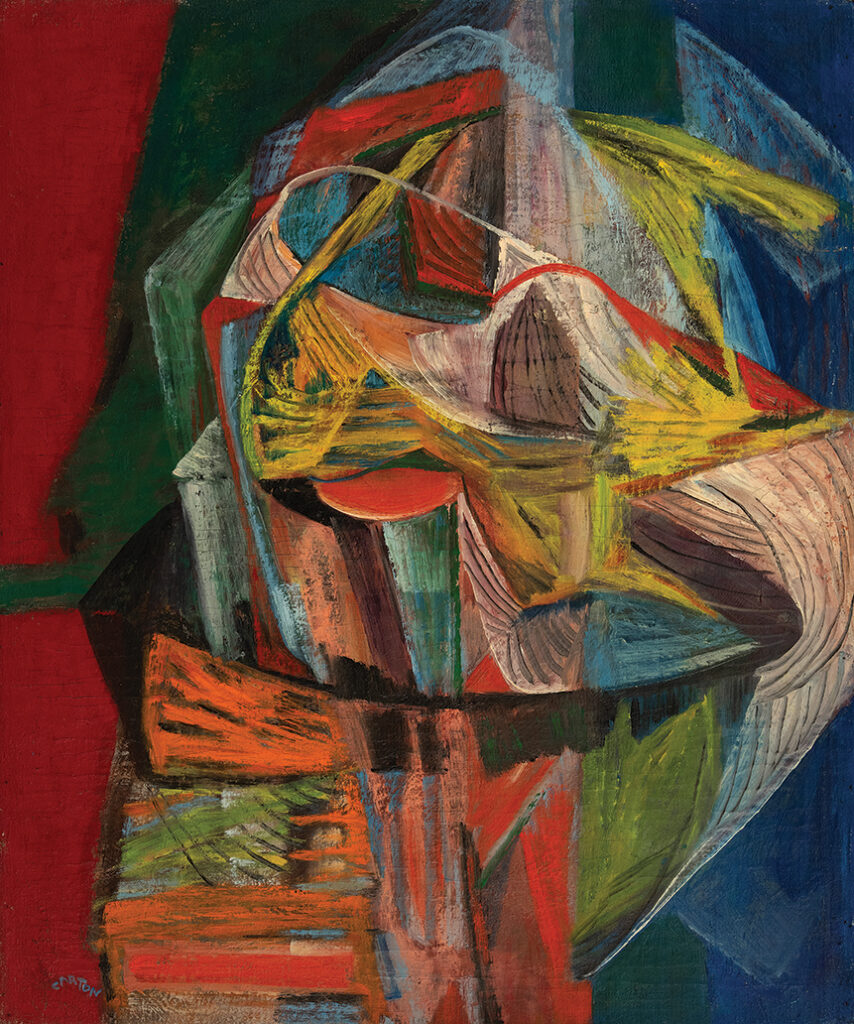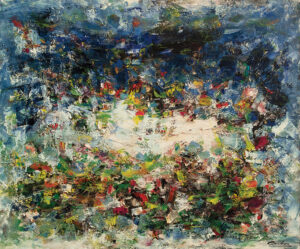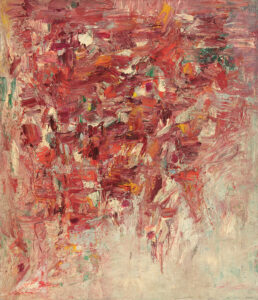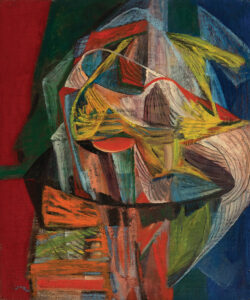Subscribe to Our Newsletter
Paint as Experience

Norman Carton: from Ukraine to Philadelphia to New York, bridging Impressionism and Abstract Expressionism
by William Corwin
At age 10, in 1918, Norman Carton and his mother were in hiding during pogroms unleashed by the Russian revolution; six years later the same boy found himself safe and sound in Philadelphia, rescued from Eastern Europe by the intervention of his older brother, who had already relocated to the States. The pogroms in Ukraine during the Russian civil war resulted in the murder of up to 250,000 Jews. Carton had escaped with his family through Romania and immigrated to the U.S. in 1922.

Summer Meadow #758, circa 1955, oil on canvas, 44 x 52 in.
Private collection, California. Courtesy of The Estate of Norman Carton and Hollis Taggart, New York.
Carton began his art studies in Philadelphia in the late ‘20s, and it is hard to imagine the transformational power of art, and stability, on a young refugee who had experienced so much suffering. As a young art student, Carton was introduced to the works of the Impressionists, Post-Impressionists, and Fauves. In later life, Carton’s style would eventually come to rest in the Abstract Expressionist school, but what distinguishes him from his contemporaries is his passion for rich liberatory color. Color was an obsession for Carton, both in painting and photography, as well as the textile design company he founded. Carton has re-emerged with other overlooked painters from his generation, along with painters such as Michael (Corinne) West, and Janice Biala, and most of the biographical information in this article is greatly indebted to the research and writing of Jillian Russo.

Untitled #719, circa 1955, oil on canvas, 28 x 24 in.
Private collection. Courtesy of The Estate of Norman Carton and Hollis Taggart, New York.
Carton began studying with Henry Bainbridge McCarter (1864–1942) at the Pennsylvania Academy of the Fine Arts (PAFA) in 1930. He received a fellowship to travel in Europe in 1934, where he became even more familiar with the legacies of Fauvism, Cubism, Surrealism, and perhaps most important to the development of his own personal style of painting, Soutine. In 1924, soon after Carton’s arrival in the U.S., a serendipitous collaboration took place in Philadelphia. In addition to founding the Barnes Foundation, Dr. Albert C. Barnes invited the philosopher John Dewey to organize classes for students at the institution. As a philosopher of pragmatism, Dewey saw art as a means to instigate a visceral response in the viewer, as opposed to purely appreciating a finished work on a wall or a plinth (as expounded in his book Art as Experience). Dewey was also heavily invested theoretically in childhood education. Barnes wanted his institution to be a site of democratic interaction with contemporary art, such as Impressionism, Post-Impressionism, and Cubism, as well as indigenous works of art from Africa, so there was a meeting of the minds between the two men. Into this mix came the young Norman Carton.

Mummer #3129, 1948, oil on canvas, 30 x 25 in.
Courtesy of The Estate of Norman Carton and Hollis Taggart, New York.
In 1935 Carton studied with Arthur Beecher Carles (1882–1952) at the Barnes Foundation. Carles was an innovative painter (and father to the painter Mercedes Matter), but also one whose style meandered between a loose impressionistic realism and a more determined abstraction reveling in the lugubrious qualities of the paint. Carles exemplified the American painter reflecting the seemingly titanic events of the French art scene, and never broke from directly referencing Post-Impressionism and other European styles. Understandably, Carton also responded profoundly to French painting, and seemed in danger, as we see in works from the ‘30s and ‘40s, of remaining in the thrall of the Europeans. But, between Carles, Soutine, and the Abstract Expressionist movement brewing in New York in the 1940s, Carton rejected realism and figuration in his practice, though he would occasionally return to portraiture, most notably in his series of portraits of well-known women in 1975 for the United Nations’ International Women’s Year.
Mummer #3129 (1948) presages Carton’s fully established painting style. The artist was no longer a youth when he painted it (he was 40!), and it shows the deft and confident application of paint of a mature hand. Unlike his later works, Mummer utilizes discernable and discreet plastic abstract forms which twist and stretch outwards from a central cruciform shape. The paint lies on the canvas with a ghostly transparent, shroudlike, and eerie quality, reminiscent of Francis Bacon’s Three Studies for Figures at the Base of a Crucifixion, painted four years earlier. The painting is strong, incorporating Cubism as well as Matisse, and a touch of Surrealism, and stands as a culmination of sorts of Carton’s art experiences up to then.




























